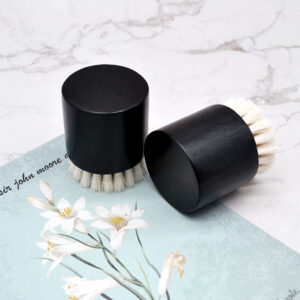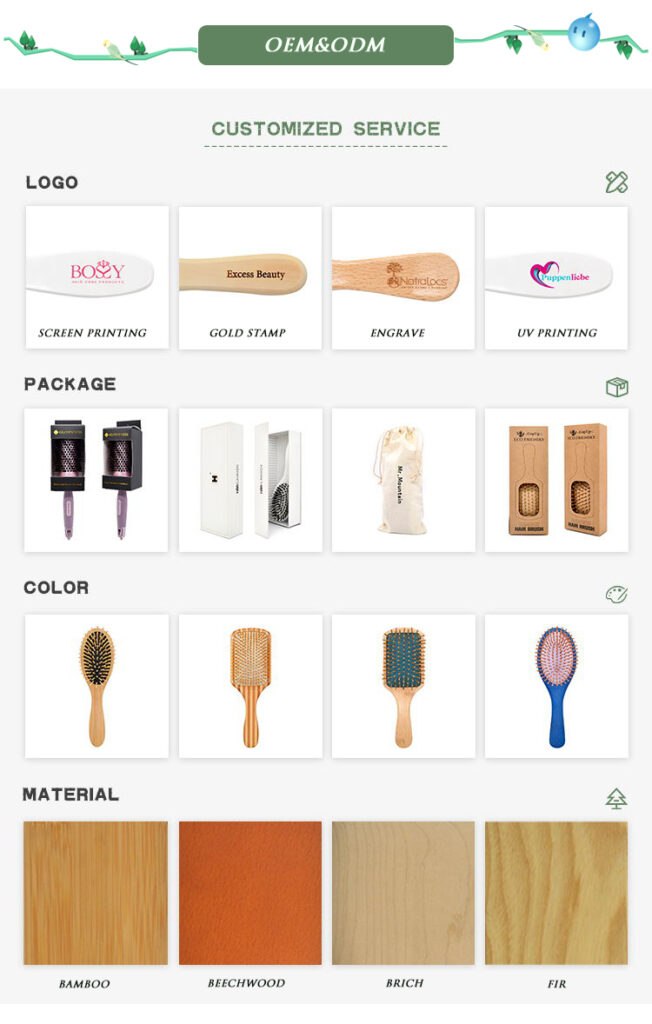Softy Goat Bristle Dry Brush For Face, it’s made of natural wood, all-natural material.
| Color | Natural |
|---|---|
| Material | Ash Wood |
| MOQ | 1000 PCS |
| Size | 5.5*4.5cm |

Dry brushing offers many benefits and is a great way to exfoliate your skin. Before you pick up a brush and begin to scrub your skin, it is important to understand how it should be done and what areas to avoid.
Dry brushing your skin is a daily massage that uses a stiff-bristled brush. It’s claimed to reduce flaky skin, improve circulation, help digestion and even improve cellulite appearance.
These claims are true, but is it possible?
“Some truths are true, but not all,” states dermatologist John Harris, MD. Continue reading to learn some dry brushing tips and safety precautions when working with sensitive skin.
Dry brushing is gaining popularity for a reason. There are many benefits to dry brushing, including:
She says that dry brushing’s mechanical action is great for rough and dry skin. Dry brushing does not clog pores during the exfoliation process. Dr. Khetarpal says that dry brushing helps detoxify your body by increasing blood circulation, and promoting lymph flow/drainage. It makes it easier for your body to sweat and remove toxins from your system by unclogging pores.
Dry brushing can help you feel better because it stimulates your nervous System. Dry brushing can make you feel energized, just like a massage.
Your skin can be smoother and more supple by removing dead skin cells. You can give your skin a brighter look temporarily.
Hot water can cause skin inflammation and strip away essential oils, fats, and proteins that maintain healthy skin. It can also cause itching and redness. You can exfoliate your skin by brushing it dry, without itching or ripping it of its moisture.
Dry brushing is best done with a stiff-bristled natural bath or shower brush. There are different bristles that are stiffer than others. It all depends on how sensitive your skin is and what you prefer. For difficult-to-reach places like your back, the long handle is useful.
If you have sensitive skin, it is possible to use a dry toothbrush. Dry brushing must be done with a firm bristle in order to make it effective. If your skin is sensitive, you can use a dry, plain washcloth. Stop brushing if you feel redness, swelling, or inflammation.
Don’t dry brush moles, warts or raised bumps. See your dermatologist if you have questions.
Don’t use a dry brush or cloth to treat skin that is damaged. She adds that this includes skin with cuts, scrapes, and sores. Do not brush areas that are red, inflamed, or irritated by inflammation, cellulitis, or skin cancer. If your skin is inflamed or irritated, stop dry brushing.
Dr. John recommends that you avoid using a dry toothbrush on your face, as your skin is more sensitive than the rest of your body. She suggests that gentler products and techniques are better for exfoliating your face than those made for it.
Drying your hair before you take a shower is the best time. You can then wash away any flaky or dead skin cells. To restore moisture to your skin, apply lotion afterward.
Dr. John has these tips for those who are new to dry brushing, or unsure if they’re doing it right.
This claim doesn’t have any scientific support.
Dr. John states that cellulite reduction can be interpreted as a temporary plumping of the skin due to increased blood circulation.
She emphasizes that you must first get to know your skin and then examine it to determine if there are areas to be avoided. If you notice any changes in your skin, consult your dermatologist immediately.



WhatsApp us